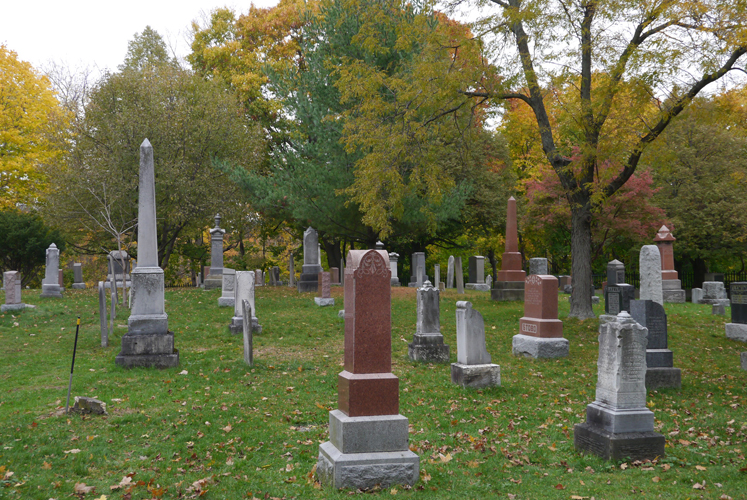As Writing Up the Ancestors approaches its fourth anniversary and I approach the end of my summer vacation, it is time to look back at last year’s posts and look ahead to the coming season.
Some blogs assess their success from the number of hits they get. That is not the case with Writing Up the Ancestors. For one thing, every now and then the stats go through the roof. For some reason, hundreds of computers in Russia hit on my blog for days or weeks at a time, making the stats that Blogspot provides completely meaningless.
But every now and then, I get an email from someone who turns out to be a distant relation or who is doing research on one of the people I have written about. That means Writing Up the Ancestors is finding its audience, mainly through Google, and that is very satisfying.
This past year I broke through a huge brick wall. My paternal grandmother’s grandparents were a missing generation, so I hired a professional genealogist to look through records in the Bay of Quinte, Ontario region where they lived. She helped uncover a family secret: they were not married, and they were probably first cousins. (See “The Ancestor Who Did Not Exist”, https://www.writinguptheancestors.ca/2017/04/the-ancestor-who-did-not-exist.html and “Martha J. Rixon’s Short and Difficult Life”, https://www.writinguptheancestors.ca/2017/05/martha-j-rixons-short-and-difficult-life.html.)
The problem with writing their stories was that they were complicated, and I may have buried my great-great-grandmother’s heartbreak in my efforts to explain the genealogical research steps I took to solve the mystery. Oh well, that doesn’t mean the article must remain a failure: I can always rewrite it.

I also researched several other lines on my father’s side last year. My Hamilton, Glendinning and Stobo ancestors came from the Scottish lowlands to Scarborough, Ontario around the 1820s, and the Whiteside family arrived from Belfast at about the same time. I looked at these extended families to see where they were from, who immigrated and who stayed behind, and what happened to that first generation in Canada. These were all large families with many descendants, so my hope is that other researchers will find their stories useful. This research did not make for great story-telling, but it was nevertheless important.
In the coming years, I plan to tackle another branch of my family tree that will present similar problems: my mother’s ancestors who settled in Massachusetts and Connecticut around 1630. Puritans in belief, they were mostly farmers and they had large families. My four-times great-grandfather Phineas Bagg, who left Massachusetts and settled in Quebec around 1795, was the fourth generation of his family born in North America.
A great deal of research has been done on this American colonial population. In many cases, it is known where these people came from in England and which ship they traveled on. Marriage, baptismal and death records are all available, as are probate records, land records, military service records and so on. It will be impossible to learn much about their personalities, so it may be challenging to write anything beyond dry facts, however, there are numerous books about colonial culture and religious beliefs. I hope to shed light on their lives by describing those practices, and the historical events of their times.
Another goal for the coming year is more research on my Irish immigrant ancestors, the Mulholland, Whiteside, Workman and Shearman families. I still know very little about them, but we are thinking about a trip to Northern Ireland next spring, so that motivates me to learn more.
As in the past, I will try to follow Genealogical Proof Standards and to cite my sources. Without clarity and accuracy, Writing Up the Ancestors would not be worth my time, or yours.
